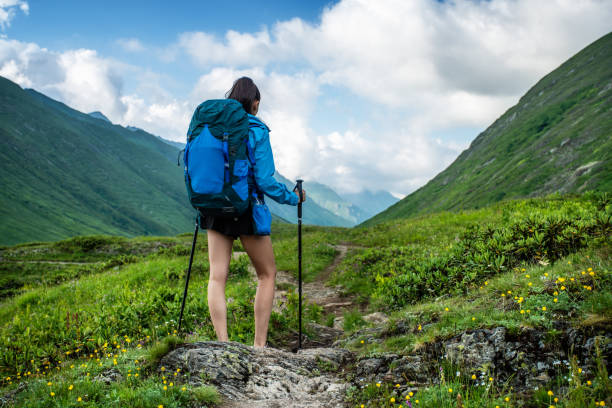Outdoor Activities
Hiking Trails: Explore the Best Paths and Scenic Routes for Your Next Trek
Hiking is one of the most rewarding ways to connect with nature, offering a unique blend of physical exercise, mental relaxation, and stunning landscapes. Whether you’re a seasoned trekker or a casual hiker, the right trail can turn a simple walk into an unforgettable adventure. Here’s a guide to some of the best hiking trails around the world, showcasing a range of scenic routes and challenging paths that cater to various skill levels and interests.
1. Pacific Crest Trail (USA)
1.1. Overview
- Location: Extends from Mexico to Canada through California, Oregon, and Washington.
- Length: Approximately 2,650 miles (4,265 km).
- Difficulty: Varies from moderate to strenuous, with sections for all levels of hikers.
1.2. Highlights
- Scenery: Traverses diverse landscapes, including deserts, forests, and mountains.
- Notable Spots: Sierra Nevada Mountains, Mount Shasta, and the Cascades.
1.3. Tips
- Planning: Prepare for long-distance hiking with a proper backpack, gear, and supplies.
- Permits: Some sections require permits, so check in advance.
2. Inca Trail (Peru)
2.1. Overview
- Location: Leads to the historic site of Machu Picchu.
- Length: About 26 miles (42 km).
- Difficulty: Moderate to strenuous, with high-altitude sections.
2.2. Highlights
- Scenery: Passes through lush cloud forests, ancient ruins, and stunning mountain vistas.
- Cultural Significance: Offers a glimpse into Incan history and architecture.
2.3. Tips
- Acclimatization: Spend a few days in Cusco to adjust to the altitude.
- Booking: Reserve your trek well in advance, as permits are limited.
3. Tour du Mont Blanc (France, Italy, Switzerland)
3.1. Overview
- Location: Circuits around the Mont Blanc massif.
- Length: Approximately 105 miles (170 km).
- Difficulty: Moderate to challenging.
3.2. Highlights
- Scenery: Features alpine meadows, glaciers, and stunning mountain views.
- Experience: Crosses three countries, offering diverse cultural and culinary experiences.
3.3. Tips
- Weather: Check weather conditions regularly, as the trail can be affected by snow and rain.
- Accommodation: Book refuges or hotels along the route in advance.
4. Fiordland National Park (New Zealand)
4.1. Overview
- Location: Located in the southwestern region of the South Island.
- Length: Various trails ranging from short walks to multi-day hikes.
- Difficulty: Easy to challenging.
4.2. Highlights
- Scenery: Home to iconic fjords, lush rainforests, and dramatic waterfalls.
- Notable Trails: Milford Track, Routeburn Track, and Kepler Track.
4.3. Tips
- Weather: Prepare for rapidly changing weather conditions.
- Reservations: Some tracks require booking, particularly during peak seasons.
5. Torres del Paine (Chile)
5.1. Overview
- Location: Located in the Patagonian region of southern Chile.
- Length: Various trails from short day hikes to the multi-day W Circuit.
- Difficulty: Moderate to challenging.
5.2. Highlights
- Scenery: Known for its rugged mountains, glaciers, and turquoise lakes.
- Wildlife: Spot unique wildlife such as guanacos and Andean condors.
5.3. Tips
- Gear: Bring layered clothing and waterproof gear due to unpredictable weather.
- Permits: Some areas require permits or reservations, especially in peak season.
6. Appalachian Trail (USA)
6.1. Overview
- Location: Stretches from Georgia to Maine along the eastern United States.
- Length: Approximately 2,190 miles (3,527 km).
- Difficulty: Varies from easy to strenuous.
6.2. Highlights
- Scenery: Diverse ecosystems, including forests, mountains, and valleys.
- Experience: Passes through 14 states and numerous landmarks.
6.3. Tips
- Preparation: Plan for various weather conditions and terrain.
- Support: Utilize shelters and trail communities for support and resupply.
7. Everest Base Camp (Nepal)
7.1. Overview
- Location: Leads to the base camp of Mount Everest.
- Length: About 80 miles (130 km) round trip.
- Difficulty: Moderate to strenuous, with high altitude challenges.
7.2. Highlights
- Scenery: Offers breathtaking views of Everest and the surrounding Himalayas.
- Cultural Experience: Passes through traditional Sherpa villages and monasteries.
7.3. Tips
- Acclimatization: Allow time for altitude acclimatization.
- Guides: Consider hiring a local guide for safety and cultural insights.
8. Cinque Terre (Italy)
8.1. Overview
- Location: Coastal trails connecting five picturesque villages in Italy.
- Length: Approximately 7 miles (12 km) for the main trail.
- Difficulty: Easy to moderate.
8.2. Highlights
- Scenery: Stunning coastal views, colorful villages, and terraced vineyards.
- Experience: Enjoy local cuisine and charm of each village.
8.3. Tips
- Travel: Best explored in the spring or fall to avoid peak tourist season.
- Passes: A Cinque Terre Card provides access to trails and public transportation.
9. Kalalau Trail (Hawaii, USA)
9.1. Overview
- Location: Located on the island of Kauai in Hawaii.
- Length: About 11 miles (18 km) one way.
- Difficulty: Strenuous with rugged terrain and steep climbs.
9.2. Highlights
- Scenery: Features lush valleys, dramatic cliffs, and pristine beaches.
- Experience: A remote and unspoiled area with breathtaking views.
9.3. Tips
- Permits: Required for camping and hiking beyond Hanakapiai Beach.
- Preparation: Ensure you have proper hiking gear and weather preparedness.
10. Rila Monastery Trail (Bulgaria)
10.1. Overview
- Location: Trails surrounding the Rila Monastery in the Rila Mountains.
- Length: Various trails from short walks to longer hikes.
- Difficulty: Easy to moderate.
10.2. Highlights
- Scenery: Beautiful mountain landscapes and historic monastery architecture.
- Cultural Significance: The Rila Monastery is a UNESCO World Heritage site.
10.3. Tips
- Visit: Combine hiking with a visit to the monastery for cultural enrichment.
- Weather: Check conditions and plan accordingly for mountain weather.
Conclusion
Exploring hiking trails offers a unique opportunity to experience diverse landscapes, from the rugged peaks of the Himalayas to the serene beauty of coastal paths. Whether you seek challenging ascents or leisurely walks, the trails highlighted above cater to a range of interests and skill levels. Prepare adequately, respect nature, and embrace the adventure—your next trek awaits!

